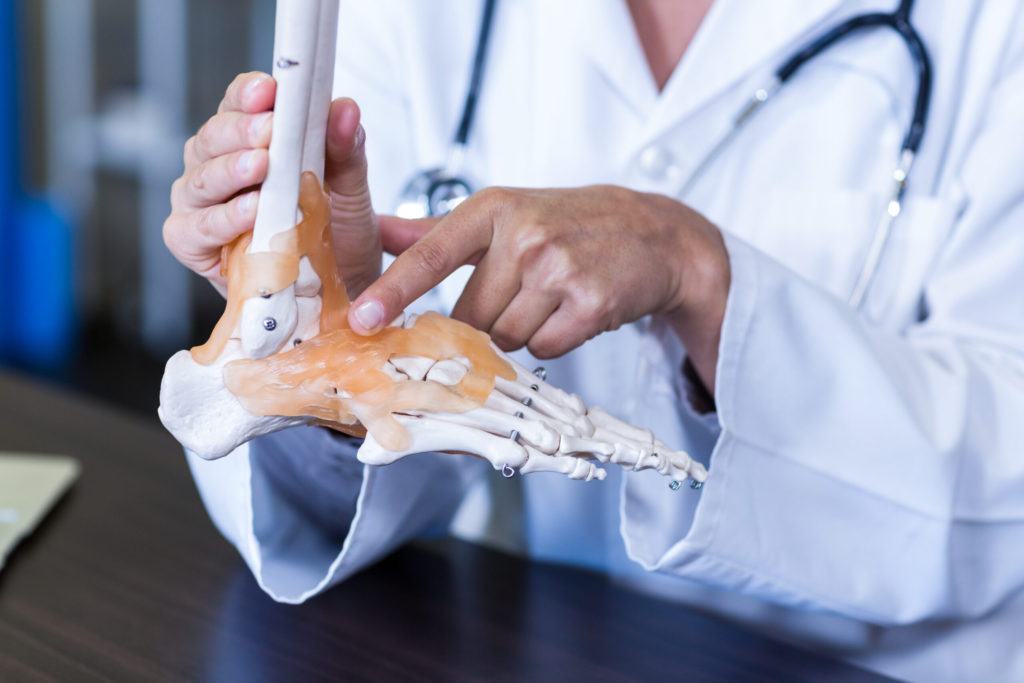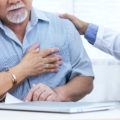Exercise and Bone Health

Exercise and Bone Health
Most people are familiar with many of the benefits of exercise, such as improving muscle strength and endurance, reducing the risk of heart disease and stroke, and preventing obesity. Perhaps not as well understood is the importance of regular physical activity in building and maintaining healthy bones. Inactivity causes loss of bone!
Aging, along with certain diseases and medications, can cause bones to become very weak and fragile over time — a condition called osteoporosis. It often occurs in women after menopause, and in men in older age. This bone-thinning disease puts people at greater risk for broken bones, which can seriously limit mobility and independence.
We also tend to lose muscle as we age — a condition called sarcopenia. People who develop osteoporosis or sarcopenia are considered frail: more likely to fall and more likely to break a bone.
Exercise works on bones much like it works on muscles — it makes them stronger. Exercise is important for building strong bones when we are younger, and it is essential for maintaining bone strength when we are older. Because bone is living tissue, it changes over time in response to the forces placed upon it. When you exercise regularly, your bone adapts by building more bone and becoming denser. This improvement in bone requires good nutrition, including adequate calcium and Vitamin D.
Another benefit of exercise is that it improves balance and coordination. This becomes especially important as we get older because it helps to prevent falls and the broken bones that may result.
Exercises for Strong Bones
There are many different types of exercise and they all offer health benefits. The two types that are most effective for building strong bones are weight-bearing exercise and strength-training exercise. Exercises to improve bone strength are site-specific. For example, walking can improve bone strength in the legs and spine but not in the wrist.
Postural stretching and strengthening can help prevent or decrease the amount of upper spine slumping seen in many older people. Leaning over to tie your shoes or sweeping and mopping can lead to spine fractures in people at high risk of spine fracture. Try to maintain good spine posture with all your activities.
Weightbearing Exercise
Weightbearing describes any activity you do on your feet that works your bones and muscles against gravity. When your feet and legs carry your body weight, more stress is placed on your bones, making your bones work harder. Weightbearing exercise after young adulthood can help prevent further bone loss and strengthen bone.
Examples of weightbearing exercise include:
- Brisk walking and hiking
- Jogging/running
- Dancing
- Jumping rope
- Hopscotch
- Tennis, badminton, ping pong, and pickleball
- Team sports, such as basketball, soccer, and volleyball
- Stair climbing
Higher impact activities, such as jogging and jumping rope, increase the weight on bones and provide more bone-strengthening benefits. However, people who are frail or who have already been diagnosed with thinning bone should talk to their doctors about the types of physical activity that would be best for them.
Strength-Training Exercise
During strength-training activities, resistance is added to movement in order to make muscles work harder and, over time, become stronger. Although resistance exercises focus on increasing muscle mass, they also put stress on bones and have bone-building capacity. Common types of strength training include weight machines, free weights, and exercises (such as push-ups) that use your own body weight. Elastic bands can also be used to add resistance to exercises.
A general guideline for strength training is to exercise each major muscle group at least twice a week. Be sure to rest for a full day between strength sessions.
Starting a Program for Bone Health Fitness
An effective exercise program for bone health includes 30 minutes of weightbearing activity, four or more days a week. To help you stay motivated, choose an activity that you enjoy. There are many activities that will get you on your feet and moving. Your 30 minutes of exercise can be done all in one stretch or broken up into shorter intervals. A 10-minute brisk walk three times a day is a great way to get started.
If it is not safe to walk outside, walking throughout your house, climbing stairs indoors and even walking in place are all great weight-bearing exercises. To really reap the benefits of exercise, you need to add flexibility and balance training to the mix. All exercise sessions should end with stretching. Increasing your flexibility improves your ability to move easily, can reduce your risk of injury, and provides mental relaxation benefits.
Before choosing an activity, it is important to consider your risk of falling. Your doctor and a physical therapist can help you plan your exercise program.People with severe osteoporosis should be careful weightlifting with their arms while standing upright to avoid excessive spine compression (10-20 pounds may be safe). They should also avoid exercises that bend or twist the spine.
Similarly, stationary bikes and rowing machines are not the best options for those with severe osteoporosis, and contact sports should be avoided. Chair and corner wall exercises can be a safer alternative.
Age and Bone Health Fitness
- Adolescents and Young Adults
Building strong bones begins in childhood. The best time to build bone density is during years of rapid growth. We essentially develop the skeleton that must last our lifetime when we are between the ages of 10 and 18 years old. Our peak bone mass in maximum strength and density is achieved in our late twenties. - Adult
Once we reach the age of about 25, physical activity alone can no longer increase overall bone mass dramatically. In adults, bone density may increase 1 to 2 %, but this increase occurs only in the area of the skeleton that is stressed and this improved density will be lost if the loading exercise isn’t continued.
However, exercise can prevent or slow bone loss, maintain muscle mass to preserve and strengthen surrounding bone, and decrease the risk of falling. Both men and women also need good nutrition, calcium, and Vitamin D to preserve their bone mass.
Women and some men in middle age may require hormonal supplementation (estrogens or androgens) to improve or maintain bone mass as they age. For older people, however, these hormones are generally not recommended. Typically, for older people with significantly weakened bone, bone-preserving or bone-building medications are better options.
In elderly adults, falls often result in fractures with long-term consequences that may include permanent disability. The most common breaks in older people occur in the wrist, spine, and hip.
Balance training and tai chi have been shown to decrease falls by 47% and reduce the risk of hip fracture by approximately 25%. In addition, men who participate in vigorous physical exercise tend to have a lower risk of hip fracture.
Body Weight and Bone Health
When people lose weight, they also lose bone. Low body weight at any age is associated with a greater risk for bone problems and fractures.
Very low body weight has increased consequences for women. Sports and exercise are healthy activities for girls and women of all ages. However, a female athlete who focuses on being thin may eat too little or exercise too much. The result may be long-term health problems and bone damage.
If young women exercise excessively, they can lose enough weight to cause hormonal changes that stop menstrual periods (amenorrhea). This loss of estrogen — the hormone that is necessary for maintaining bone mass — can cause bone loss at a time when young women should be adding to their peak bone mass.
A woman who misses several menstrual periods, sustains a stress fracture in sports, continuously focuses on her weight, or has a distorted body image should see her doctor right away.
Conclusion
Although exercise has been shown to have clear bone-building effects in children and adolescents and bone-preserving effects in adults, it is just one element of a total program to prevent bone loss and decrease fracture risk.
Understanding your individual risk for osteoporosis, such as genetic factors and family history, is essential. A balanced, calcium-rich diet, adequate Vitamin D, and a healthy lifestyle (avoiding excessive alcohol and nicotine) are also key ingredients for lifelong bone health.
Written by Nurul Izzah.
Reviewed by Doctoroncall Panel Doctor.















